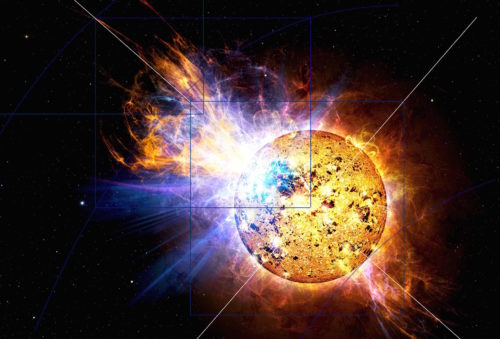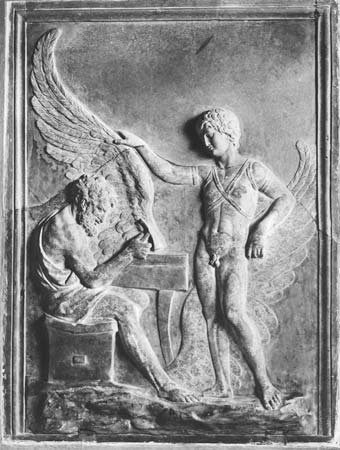
In order to celebrate the heliocentric alignment today between Mercury and Uranus, the two rulers of the illuminated and occult Mind, and Principles and Energies of the harmonic order and unity (axis/rod/caduceus 1-4-7: Sun/Vulcan-Mercury-Uranus), here are the first pages extracted from “The Solar System in Space”,* a writing on Heliocentric Esoteric Astrology, namely the perspective of the Human Group Soul (Sun at the center) attested on the higher mental plane (higher Manas):
“… when our paths converge within the sun, then you will realize the entire grandeur of Cosmos. Conceive the sun as a guarantee of a new science.” (Infinity I § 25, Agni Yoga Collection)

1.1 HYPOTHESES AND GENERAL PRINCIPLES
PRIMARY HYPOTHESIS.
A single, twofold hypothesis supports all the ideas written in these pages:
Space is a living entity and the universal container of all life.
This is a well-founded hypothesis. Who could ever deny the existence of Space and life? Contemporary human thought recognizes them but considers Space as empty. It does not realize that Space and life are one and the same, together with their mutual relationship. Space is thus considered to be without a basis and to move in uncertain and transitory spirals which leave no trace: in short, Space is not constructive. Because of this assumption, the idea that the container and the contents are indivisible and give life to a third element is not recognized. Geometry, understood as a study of Space, is the mother of all sciences, arts, philosophies and religions; of all forms, actions and memories, and tends to exact knowledge of that primordial Fire called Life.
That Space is alive answers a necessity: how could Life be closed in something not living? This concept, nevertheless, is presented here as a simple hypothesis to take into account the actual level of human mentality which gropes between uncertain abstractions and inaccurate concreteness. A fundamental hypothesis already accepted by the heart as true has been adopted. Let whoever has occasion to read these pages realize that this hypothesis is the basis of all deductions, discoveries, progress and conjectures which will later be brought to his attention.
Whoever does not want to accept this concept is advised to read no further, as nothing presented here would make sense to him and everything would only be a useless burden.
It appears clear from the start that a choice is inevitable: either to embark with courage on a long journey of mental exploration, not without danger, or to remain in the usual shadow of common preconceptions. Having free will, man has the right to choose, accepting the consequences; in either case only one of the roads can be taken at any time.
*
The first hypothesis having been affirmed and declared – a necessary and definitive act – the adventure can be attempted, and the Solar System explored in a new way.
KNOWING THE HEAVENS.
Man desires to understand and know the Heavens, which fascinate him: they are, perhaps, the most beautiful mystery, unfathomable yet visible, revealed to him by the senses. In many respects the Heavens resemble the sea; at first sight they both appear as separators, as great fields impenetrable to knowledge which close off all paths. On the shorelines of the sea it is known that all roads come to a halt. The horizon, which is the shore of Heaven, is further unreachable. On those margins man remains stuck for a long time, but the desire in him to go beyond is not extinguished. For a long time it has been known that the sea, indeed, is the most open of the routes, the best binder among all the coasts and their peoples. It was enough to build floating maneuvers in order to understand and utilize the oceans as passageways of relationships and civilizations.
On the contrary Heaven, which is Space, is not yet recognized as a means for communicating; and yet it is the origin of all forms of communion. It is unity; and yet many still believe that it is impossible to cross its depths and heights. Having crossed all the oceans to explore the world, men think they have exhausted all possibilities of adventure. They now stay all huddled together on what seems to be an isolated, lonely rock in the Cosmos, struck by magnetic storms and perforating rays. It is only a pause, a stage on their journey. In their hearts they long to navigate Space, and they are gathering their strength for another leap forward.
This is an image that describes the current condition of the human enterprise, which cannot and does not want to limit itself to Earth. Day by day the tension grows in man, and with it the audacity which is necessary for more abundant acts of freedom.
It is a solemn moment that marks his life. Among the ruins of old civilizations he looks to new visions. He is still hesitant, doubtful, but already is silently preparing new mental resources and courage. Accustomed by now to building vessels and airplanes, man has not yet understood that real exploration of Space does not require or allow mechanical devices but only invisible intelligent consciousness. The sea and the air are supportive, whilst Heaven does not offer a foothold for what is concrete. It is time for man to let go of his machines, along with the mentality that was used to create them.
Here lies the deep crisis of man. It will certainly emerge out of the constraints and limitations found on his planet, which are not set in stone, but only on the condition that he can abandon concreteness. Now this renunciation seems yet quite impossible and illogical to him. If he wants to succeed, he will have to acknowledge the role that belongs to logic: once discovered, the higher possibilities of the mind will not find limits to its flights, and will attempt in Space those routes that Daedalus practiced in the sky.
*
“Abandon concreteness” is a high-sounding phrase. Ancient astronomers and astrologers, who through their love of Space first explored the Heavens, did not need any complex and sophisticated instrument to formulate those concepts that are still alive today. The concreteness did not keep them on the last earthly beaches. The renunciation of the concrete is, in fact, a long chain of ordered phases, each of which is indispensable and prepares for the next. Such a process has already been started a long time ago. Today the final deed is not yet possible, nevertheless it is reasonable to exert oneself in the preliminary stages.
To turn the mind towards Space, to the distant worlds and to the Solar System, after having visited and having come to know the most secret places on Earth, is a necessary and beneficial action and even a duty from this perspective.
*
The Earth is, in fact, a spaceship, which sails in steady formation with other great celestial vessels. It allows man to observe signs and fires, directions and energies, lights, cycles and reflections and spatial arrangements. The endless journey of the planet is a daily reality, and perhaps for this reason it goes unnoticed. As a passenger, it is not correct for man to consider himself isolated in Space and for Space: he lives on board a cosmic vessel that along with others follows a set course. It is in the best condition to observe and learn about nature and the laws of the great spatial seas being crossed.
Today man, a heavenly creature and wanderer of the Heavens, lives, without knowing it, in, and on, the Heavens.
SUCCESSIVE HYPOTHESES.
All that is written here, is based, as stated, on the one hypothesis of the living Space, nonetheless numerous secondary hypotheses will be presented, all of them generated and legitimized by the principal one.
Hypotheses can be compared to thought structures, similar to the scaffolding needed by builders for construction work, which has to be proportionate to their function, safe and sufficiently solid. Analogous is the ascent of a mountain climber on a rocky cliff or icy wall: he has to make decisions on which depends his own safety and that of his climbing companions, and, with courage and expertise, he has to assess a number of handholds, sometimes risky or misleading, before knowing for sure if they will hold. Without accepting and overcoming this challenge he will not rise to the summit.
The same can be said in the case of mental construction, especially if novel for its time and so without safe pathways and outlines. He must set a series of hypotheses on the basis of the initial assumption, all of them well connected and interdependent, evaluated by the light of the heart, which is the true organ of the thinker. To these he trusts and continues on. Such mental structures, however, unlike the hand-holds of the rock climber and the scaffolding of the builder, are alive and are born spontaneously, springing from a single root. The thinker discovers or finds them in himself, and he would not know how to indicate a different origin. This no doubt reassures him, but does not relieve him of the responsibility of the laying of the pieces, that is, of their correct use.
In brief, hypotheses are living mental energies (here is a hypothesis!) to be used with caution but without hesitation or fear. There is no other way to build and climb: every progress is based on the previous ones, at times remote.  The only guarantee of security, both static and dynamic, lies in the careful verification of the hierarchical balance between the various supporting functions, i.e., the hypotheses, major and minor.
The only guarantee of security, both static and dynamic, lies in the careful verification of the hierarchical balance between the various supporting functions, i.e., the hypotheses, major and minor.
It has to be said, however, that the mason of thought has a plumb line in his heart that allows him to work with elated hope. The heart knows if the structures hang or are imbalanced; if they are reliable or to be redone.
*
These assumptions concerning the hypotheses and their use are always valid, but they take on special importance when it comes to proceeding through unknown or non-existent ways, when trying to establish a reasonable system of approach to the truth where there are no concrete foundations or already visible steps.
The search for the deep and living nature of the Solar System, thus not only quantitative, is practicable by anyone, in theory, but requires considerable mental independence and a certain level of experience. Will one be able to reach it? Who could ever know, at the beginning of any enterprise? On the other hand, if one refuses the trial one does not learn. The risk of failure is largely compensated by the incomparable help that comes down from above, between the rays of the Sun and the stars.

* by E. Savoini, 1993 – thanks to Jancis and Enrica and Simon for the ongoing revised translation – pictures are by TPS editorial staff.






What a marvelous thought! Changes the way we view things and therefore, how we experience them.
“The Earth is, in fact, a spaceship, which sails in steady formation with other great celestial vessels. It allows man to observe signs and fires, directions and energies, lights, cycles and reflections and spatial arrangements. The endless journey of the planet is a daily reality, and perhaps for this reason it goes unnoticed. As a passenger, it is not correct for man to consider himself isolated in Space and for Space: he lives on board a cosmic vessel that along with others follows a set course.”